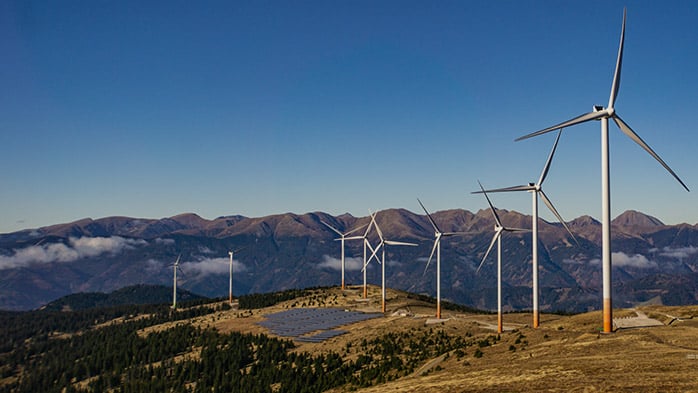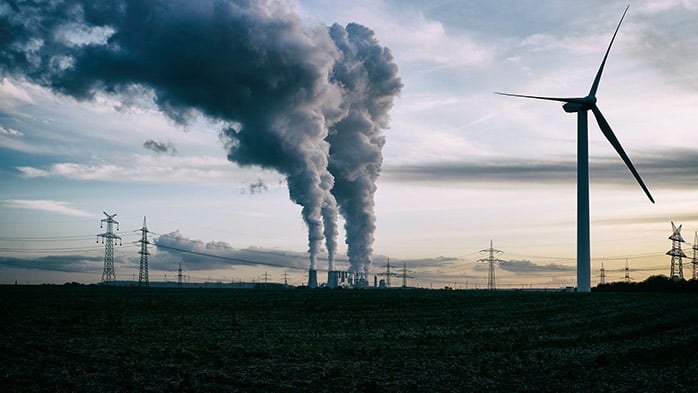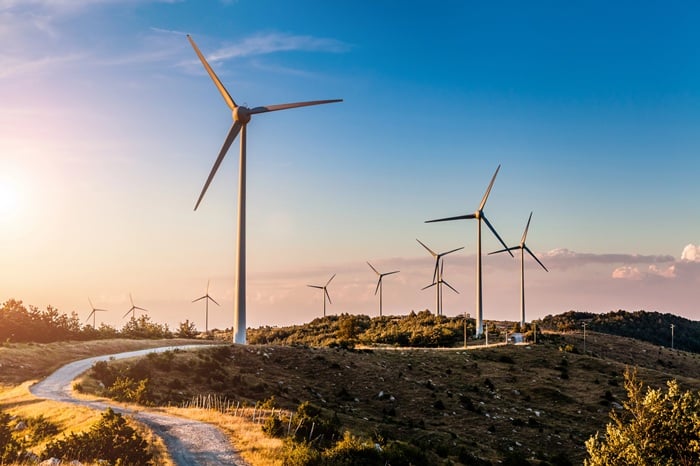Increasingly, all commodity markets will be shaped by sustainability. Markets, policy, clean technologies, sustainability and the energy transition will become ever more interlinked and complex. In part one of our top 10 sustainability calls for commodity markets in 2024, we focus on the following five calls. We will provide detail on our other five calls in part two.
1. Reporting pressures increase
Businesses should prepare for the range of new and expanded reporting requirements that are incoming. This will require detailed thinking across both time and geography. Pressure is set to increase significantly. It is key for organisations to understand when and how these regulations will apply to their operations. Businesses will increasingly need to think cross-border and be aware of the extra territorial reach of requirements, while also examining what each requirement means for reporting and for supply chain disclosure obligations.
In the European Union, the Corporate Sustainability Reporting Directive (CSRD) is designed to strengthen and expand on existing frameworks. This directive aims to bring more cohesion and consistency to disclosures and implicates entire value chains. It aligns closely with other EU legislation, primarily the EU Taxonomy, the pivotal classification system for defining environmentally sustainable economic activities, and the Sustainable Finance Disclosure Regulation (SFDR), designed to increase transparency, funnel capital into sustainable investment and curb greenwashing.
In the USA, the Securities and Exchange Commission (SEC) is inching towards implementing the climate disclosure rulings it proposed in 2022. However, the exact nature of these requirements has yet to be finalised. There are also moves at the state level; for example, California recently signed into law two core bills of the state's Climate Accountability Package, Senate Bill 253 (SB 253) and Senate Bill 261 (SB 261).
The International Sustainability Standards Board (ISSB) has issued its inaugural standards, IFRS S1 and IFRS S2. The ISSB has taken over monitoring of climate disclosures from the Task Force on Climate-related Financial Disclosures (TCFD). These standards aim to increase sustainability-related disclosures across global capital markets, intending to raise trust and confidence in company sustainability disclosures and to guide investment decisions. There are some moves globally to align with these (e.g., Australia).
Reporting requirements globally will increase, both in scope and quantity. As standards increasingly overlap, quality transition planning is critical to navigate policy uncertainty and liability risk. There are increasingly significant risks for organisations or supply chains that operate across multiple jurisdictions. For policy makers, the more standards diverge, the more they could raise costs and create reporting fatigue.
See CRU’s Sustainability and Emissions Service for more information.
2. Biodiversity pledges gain traction
The Taskforce on Nature-related Financial Disclosures (TNFD) published its final recommendation on 18 September 2023. These provide disclosure recommendations and guidance on how to report and act on evolving nature-related dependencies, impacts, risks and opportunities. The aim of this non-legally binding framework is to provide organisations with the structure to integrate nature into decision-making, enabling shifts in financial flows towards nature-positive outcomes. The first science-based targets for nature have also been released; 2023 saw a group of companies pilot these schemes, targets and validations will be rolled out in 2024.
This is another area businesses will increasingly need to monitor. As with the pressure seen on emissions reporting, the more prepared businesses are, the easier it will be when requirements become mandatory.
3. Polarised views on need and speed of climate action
Businesses will face increased scrutiny and risk as the effects of climate change intensify. However, the speed of required action is not set. Political resolve will ebb and flow even if the trend is clear.
2024 will see significant elections, such as in the USA. Here, the outcome will matter significantly for environmental policy, although irrespective of the outcome, some parts of the Inflation Reduction Act (IRA) will be harder to unwind than others.
At the supranational level, the EU has remained committed to its climate agenda, even in the face of unprecedented energy prices sparked by the Russian invasion of Ukraine, but the political landscape is changing there as well. A new European parliament will be elected in June 2024 and a new European Commission appointed later in the year. It is widely expected that the new parliament and EC will be less green than the outgoing bodies. As a result, the speed of policy development and implementation is likely to slow from the breakneck speed seen over the last few years. These likely developments reflect trends at the national level. Sweden closed its ministry of environment in 2022, while the strong showing of populist Geert Wilders in the Dutch general election in November might lead to reduced Dutch climate ambition in the years ahead. There might also be increasing pushback from governments in Central and Eastern Europe. Elsewhere in Europe, the UK has performed a number of U-turns, including taking measures to lower its carbon price and pushing back a number of phase-out dates for polluting technologies.
With India and South Africa some of the largest greenhouse gas emitters globally, the countries’ general elections in 2024 will also be two political events to watch closely.
See CRU’s Sustainability and Emissions Service for more information.
4. Incentivising emission reductions
Explicit carbon prices, direct charges levied on emissions per tonne, either through an emissions trading scheme (ETS) or a carbon tax, saw significant developments in 2023. These aim to increase the cost of using traditional, fossil-based technologies, such that low-carbon alternatives become economically viable.
Notably, the EU ETS exceeds €100 /CO2, a level which should drive meaningful decarbonisation. In New Zealand, the government introduced new measures to boost the domestic carbon price after a period of decline. In other compliance markets, the UK carbon market saw significant changes, with the UK government taking measures to cause carbon prices to fall. At least as important are developments in emerging economies where governments are increasingly interested in establishing their own compliance markets. Brazil is in the final stages of setting up a domestic ETS, while India and Turkey are preparing the ground for their own cap-and-trade schemes. In Mexico the launch of the compliance phase of the national ETS was meant to take place in 2023 but was postponed until 2024.
Voluntary carbon markets saw a tumultuous year, with issues surrounding variable quality growing. Voluntary carbon markets face issues surrounding permanence, traceability, additionality. This has led to notable corporates exiting the market and the US Commodity Futures Trading Commission (CFTC) is planning to increase its market oversight.
The US has no federal carbon price but there are carbon pricing schemes in several states. However, there have been moves over the past year. The social cost of carbon, a metric used for internal carbon pricing to be supplier to US government, has come into more focus. For now, the US government has taken another route though to decarbonise the economy. The Inflation Reduction Act, launched in mid-2022, offers significant financial incentives in the form of subsidies, tax breaks or feed-in-tariffs to incentivise green activities and the move to green technologies.
Japan also plans to follow a mixed strategy to decarbonise its economy. As well as a nationwide ETS scheme (there is already a regional scheme for Tokyo), the government plans to spend around ¥20 tn (~$135 bn) over the next ten years as part of its flagship ‘GX’ policy package, with the aim of catalysing a further ¥130 tn (~$1 tn) of private investment.
On 24 October 2023, the Chinese government announced four new ways to register for certified carbon credits under China Certified Emission Reductions (CCER), including offshore wind power connected to the grid, solar thermal power generation connected to the grid, afforestation carbon sinks, and mangrove creation. The newly launched CCER methods provide new ways to be compensated for renewable energy. In addition, the launch of CCER will also provide supply to China's national compliant carbon market, which allows for up to 5% of CCER certificate usage of total annual emissions per facility in carbon credit surrendering.
Understanding carbon pricing is vital as its role in incentivising emission cuts will grow internationally. Pricing emissions is one of the most effective ways to reduce emissions and will be central to many governments’ responses in mitigating climate change. Without carbon prices, the case for investing in decarbonisation is far more challenging. Policymakers will need broader and higher carbon pricing schemes to close the cost gap between traditional and green technologies.
As the world moves towards a low-carbon future, businesses must adapt and evolve to remain competitive. Decarbonisation is vital and the costs of inaction will grow rapidly, but decarbonising whole economies and value chains is not going to be easy nor cheap. Carbon pricing will be needed to address this. However, by understanding the risks and opportunities associated with decarbonisation and carbon pricing, companies can better position themselves to thrive in the future. All commodity markets will be transformed by the spread of higher carbon prices.
See CRU’s Sustainability and Emissions Service for more information.
5. Race for critical materials intensifies
The energy transition is radically transforming geopolitics and investment. Renewable energy generation, energy storage and infrastructure changes are all placing increased demands, disruption and challenges on certain commodity supply chains, for example, copper and battery materials. We are seeing the scale of the challenge for the EU and the USA to build their own supply chains for the EV sector.
As the importance of the next generation of commodity demand becomes clearer, certain commodities are being classified as "critical”. Commodities are likely to go critical when market information is uncertain, opaque, unreliable and insufficient. Seven key measures can be used to anticipate and manage material criticality, roughly divided into two sets. Demand certainty (market predictability, substitution risk, recyclability) and supply certainty (production pipeline, reserves and resources, sovereign risk ESG performance).
Knowing which these are, why, and moreover what can be done about managing criticality is essential for individual firms to unlock advantage and make the right decisions to successfully navigate markets as they develop.
Critical mineral baskets are dynamic across both regions and time. Different countries have overlapping but different baskets of critical minerals, based on their supply and demand assessments. Critical mineral lists are also dynamic over time, for example, the US Energy Department ranks copper’s criticality as “not critical” for the short term and “near critical” for the medium term.
Due to their importance to key technologies and supply chains, expect more cross-border policy and government action as the race for critical minerals intensifies.
See our webinar Core or critical – resolving the commodity conundrum for more information.
Coming soon: Part two of CRU's top 10 sustainability calls for commodity markets in 2024

















